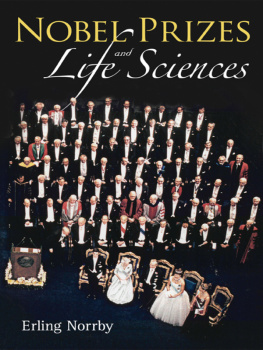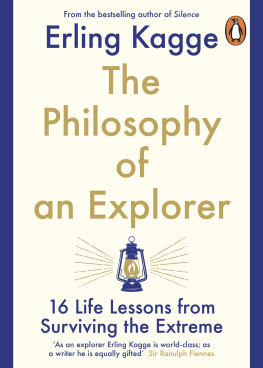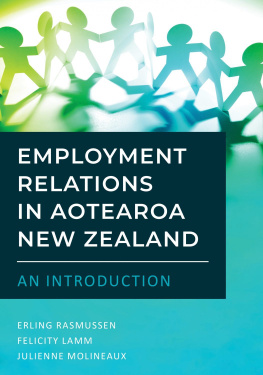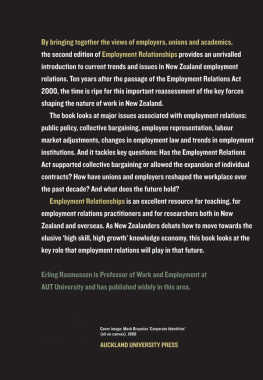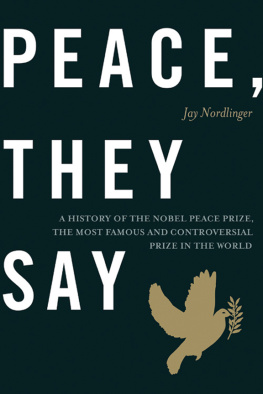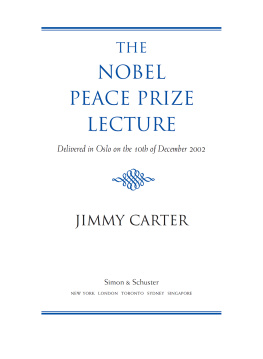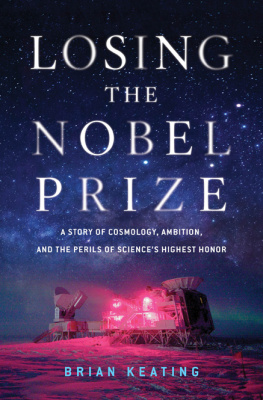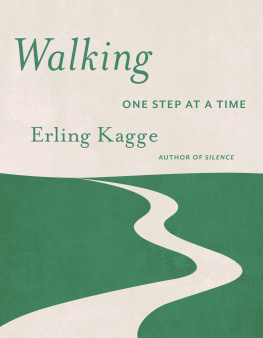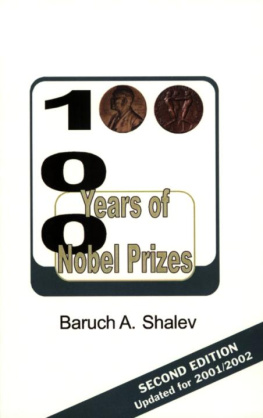Published by
World Scientific Publishing Co. Pte. Ltd.
5 Toh Tuck Link, Singapore 596224
USA office: 27 Warren Street, Suite 401-402, Hackensack, NJ 07601
UK office: 57 Shelton Street, Covent Garden, London WC2H 9HE
Library of Congress Cataloging-in-Publication Data
Norrby, Erling.
Nobel prizes and life sciences / by Erling Norrby.
p. cm.
Includes bibliographical references and index.
ISBN-13 978-981-4299-36-7 (hard cover : alk. paper)
ISBN-13 978-981-4299-37-4 (pbk : alk. paper)
1. Life sciences. 2. Nobel Prizes. I. Title.
QH315.N667 2010
570.79--dc22
2010031703
British Library Cataloguing-in-Publication Data
A catalogue record for this book is available from the British Library.
Image on : The Three Younger Sons of Shah Jahan, Mughal painting by Balchand
(India, early 17th Century). Courtesy of V&A Images/Victoria and Albert Museum, London.
Copyright 2010 by Erling Norrby
All rights reserved.
Printed in Singapore by Mainland Press.
Preface
This book project has evolved over a long time. During 19972003 when I was the Permanent Secretary of the Royal Swedish Academy of Sciences I frequently gave lectures around the world on A century of Nobel Prizes later with an added prefix More than . This theme was used for my inaugural lecture at the American Philosophical Society and a short version of the text was published in the journal of the Society (Norrby, E., A century of Nobel Prizes. Proc. Am. Philos. Soc. 2002; 146:323336). is a markedly expanded version of this article. In particular I have researched Alfred Nobels contacts with the Royal Swedish Academy of Sciences and with the Karolinska Institute. This was done in order to understand his motivation for the formulations used in his final will. The first chapter also reflects on the process of selection of Nobel Prize recipients and how this has evolved over time. These developments are further illustrated by the different examples of prizes given in later chapters.
Throughout the writing of this book I have used my own experiences of working with Nobel Prizes as a sounding board. These developed after I had become Professor and Chairman of Virology at the Karolinska Institute in 1972. For some 20 years, from 1973 onwards, I was involved in the committee for the prize in Physiology or Medicine in different functions mostly as an adjunct or ordinary member of the committee. The meetings with the committee were the best experiences during my 37 years at the Institute. Everyone on the committee was aware that we were carrying a unique responsibility. We were expected to try to understand all the advancing frontiers of the field of biomedical research and related fields of life sciences. Based on this insight we were to judge priorities, allocate these to the appropriate scientists and compare the relative magnitude of the discoveries proposed. These meetings fostered friendships transgressing the traditional if unfortunate territorial atmosphere of medical faculties. When I moved on to head the Royal Swedish Academy of Sciences in 1997, I brought with me valuable experiences of the Nobel work at the Karolinska Institute for my supervision of the work with the Nobel Prizes in Physics and Chemistry at the Academy, and in my function as a member of the Board of the Nobel Foundation.
In 2004 I was invited by one of the previous visiting Japanese scientists in my laboratory, Takehiro Togashi from Sapporo, Hokkaido, to give a lecture on Serendipity and Nobel Prizes. This was an interesting theme to review and it gave me insight into the life of a word from its first introduction. Serendipity has become a popular word in science. It is striking how incidental events may cause unexpected reorientations of the course of science. In fact the experience is that many of the discoveries that have had a major impact on the course of societal developments were not intended, at the time they were made, to provide the opportunities they later were found to offer. The material collected for this lecture was used in the writing of . She also made available the picture of Merton, her late husband.
In 2005 I had a meeting with Stanley Prusiner (presented in on which he also gave good advice), a friend for many years and Nobel Laureate in Physiology or Medicine in 1997. We discovered that we were both interested in the events that led to the Nobel Prize in Physiology or Medicine to John F. Enders, Thomas H. Weller and Frederick C. Robbins for their discovery that polio virus could grow in cells of non-nervous origin. Because of their momentous discovery it became possible to develop effective vaccines and eliminate one of the major epidemic scourges of the first half of the 20th century in industrialized countries. The archives of relevance for this prize had just been released following the 50 years secrecy rule. We obtained permission from the committee for Physiology or Medicine, represented by its then secretary Hans Jrnvall, to review the relevant documents. It should be noted that there are strict rules controlling access to the Nobel archival material. They can be made available after a written application, but only for scholarly work. The documents were put at our disposal at the Nobel secretariat by the kind assistance of Ann-Margreth Jrnvall and Agneta Sjvall. They have continued to provide excellent assistance during my yearly January visits after 2005. In 2010, the new secretary of the committee, Gran Hansson, gave me permission to use the archives.
Since all the documents of the archives, except some of the nominations, were in Swedish I first had to translate them into English. Hereafter, Prusiner and I could sit down at the Nobel Forum to review them. We made exciting discoveries. I might add that the personalities we encountered in the documents were people that I had met as teachers at the Karolinska Institute or as colleagues during my early career as a virologist. One important person in the polio field was my predecessor as Professor of Virology, Sven Gard, who turned out to have had a major influence not only on the 1954 prize, but also on many other prizes during the 1950s and 1960s. It makes a major difference to write about people, whom one has met and sometimes even learnt to know quite well.
As we were leaving the Nobel Forum after one of our sessions we happened to meet a virology colleague Lennart Philipson. We told him about our project and he then mentioned that in 1954 there was an exceptional leak about discussions concerning the prize in Physiology or Medicine to The New York Times, information we could follow up. We eventually summarized our findings in a manuscript which was published in a regular scientific journal (Norrby, E. and Prusiner, S. B., Polio and Nobel Prizes: Looking back 50 years. Ann. Neurol. 2007; 61:385395). This publication provided the core part of , which includes some supplementary material and adjustments to harmonize with other chapters. Many individuals were helpful in the development of the article and hence also this chapter. Not only did we have permission to use the archives at the Karolinska Institute, but also at the Royal Swedish Academy of Sciences. Columbia University Oral History Research Office gave us access to Robbinss reminiscences and our colleagues Margareta Bttiger, Hilary Koprowski, Erik Lycke, Michael Katz, Samuel Katz, Neal Nathanson, Weller himself (still alive at the time) and Julius Youngner gave valuable assistance.
The interesting experience of reviewing the archives of the 1954 prize inspired me to review the 1951 prize to Max Theiler. Again the archives revealed very interesting circumstances and eventually I wrote a comprehensive essay about the history of yellow fever and about the prize. Material for research was made available not only at the Karolinska Institute but also at the American Philosophical Society where, however, Theiler was not a member by kind assistance of Marty Levitt, and in particular at the Archives of the Rockefeller Foundation, Sleepy Hollow, New York, where I was well cared for by Lee Hilzik and Darwin Stapleton. Stapleton also generously edited the language of my essay and in addition provided valuable material for was published after a careful editing by Jennifer Bell (Norrby, E., Yellow fever and Max Theiler: The only Nobel Prize for a virus vaccine.

